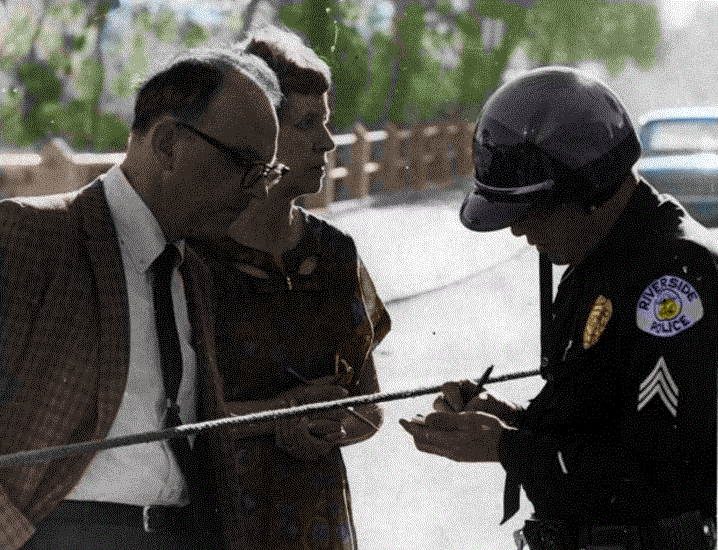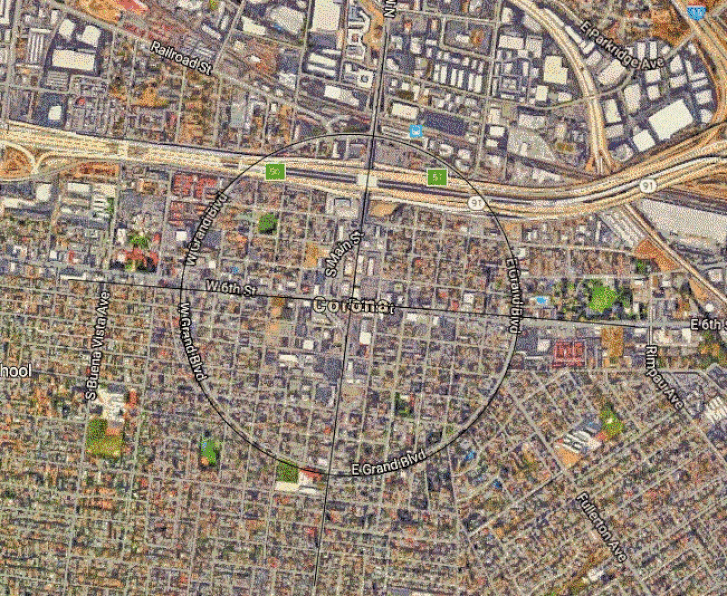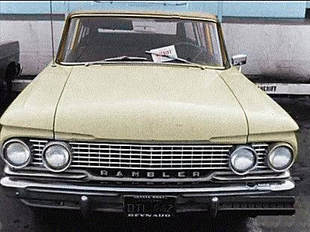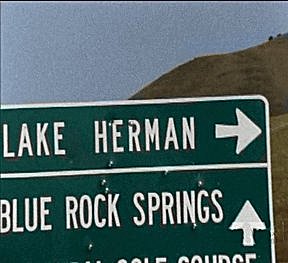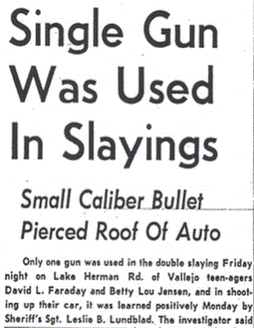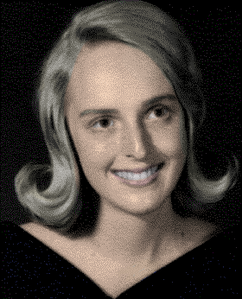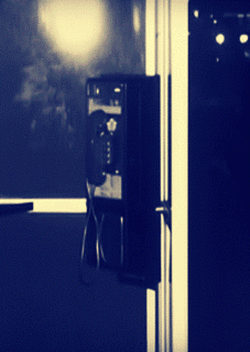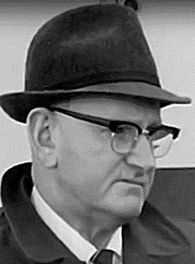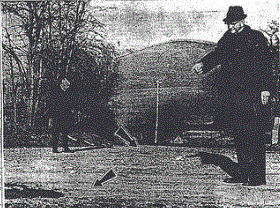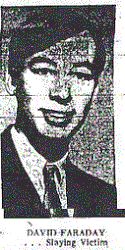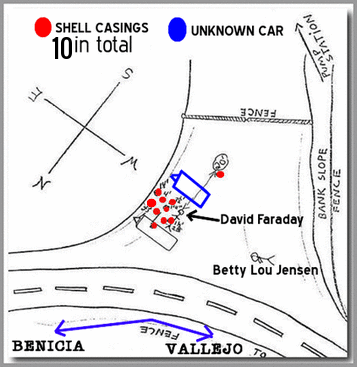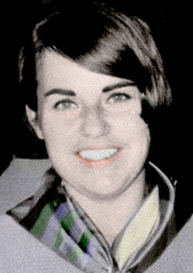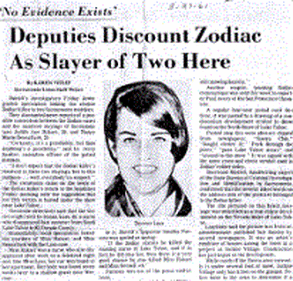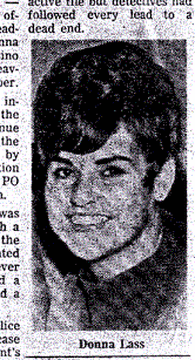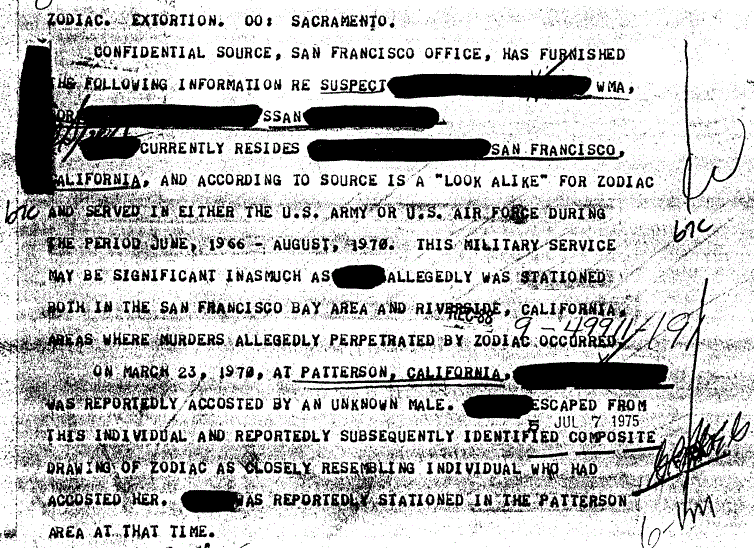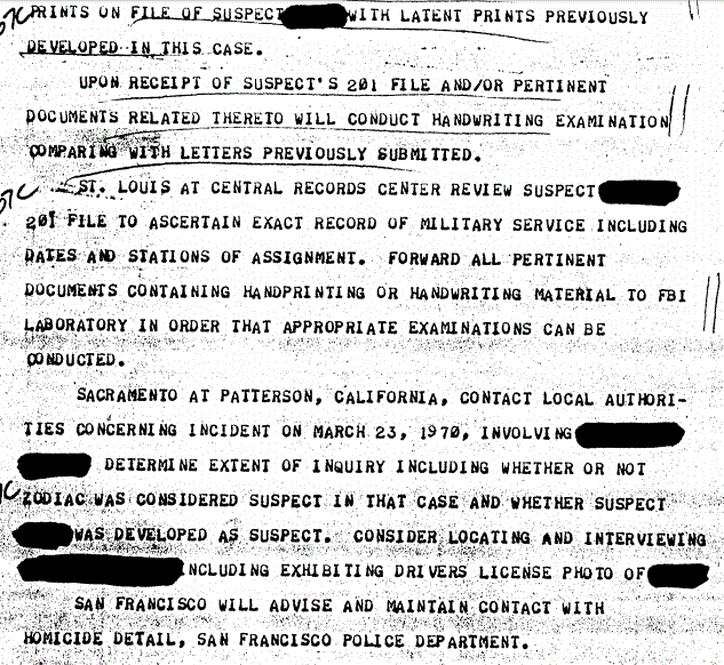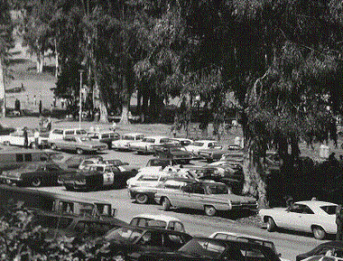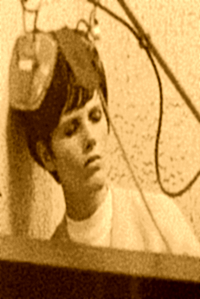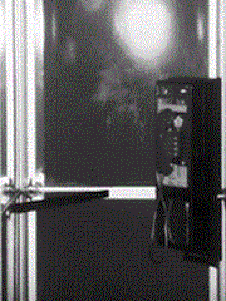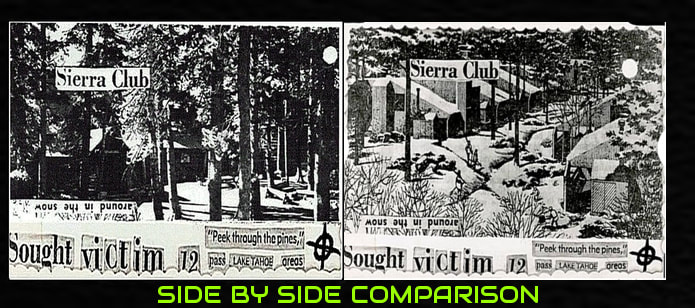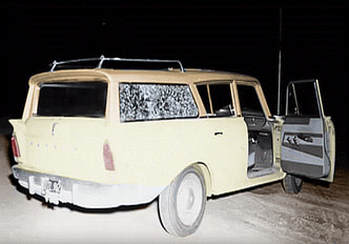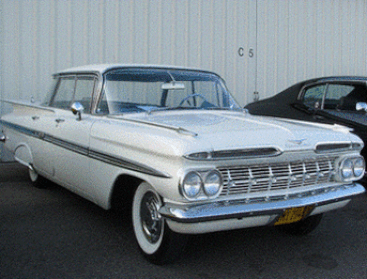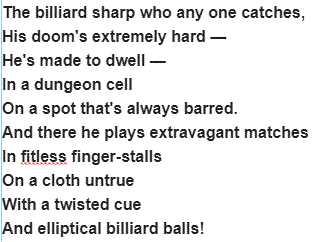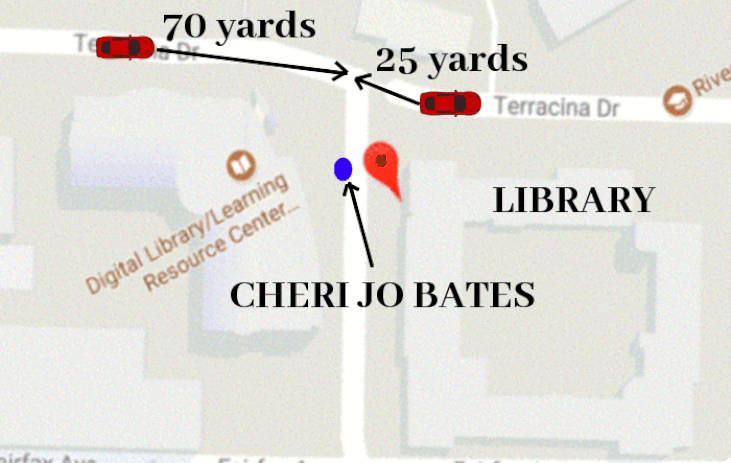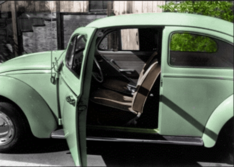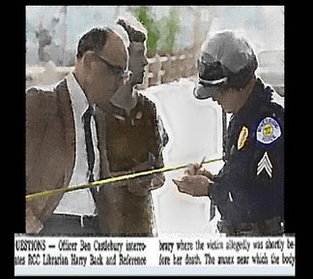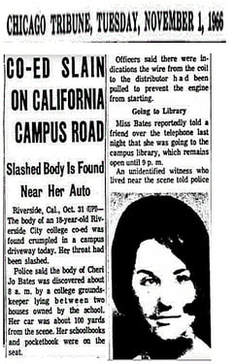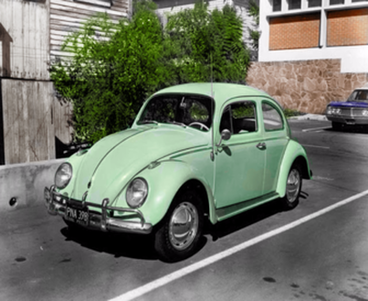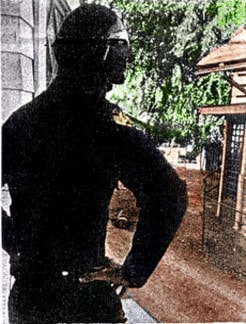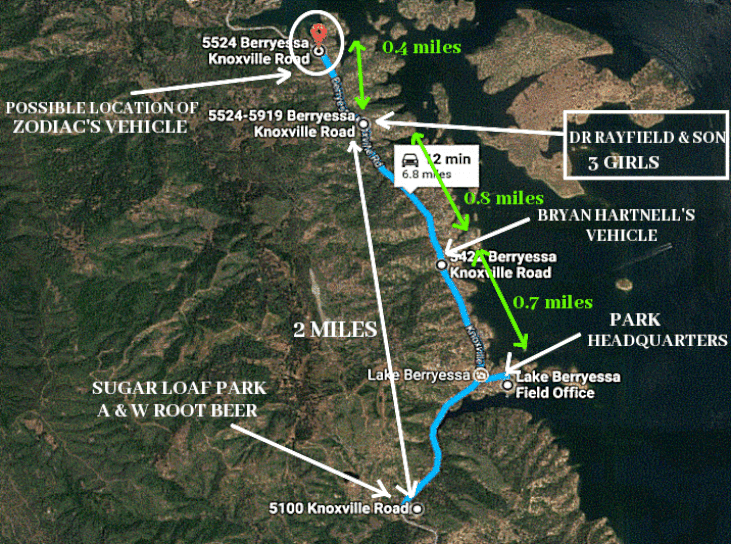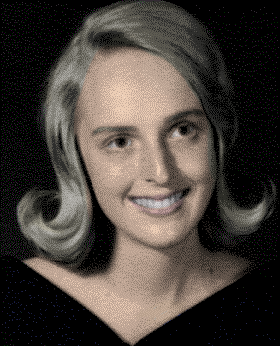The unsolved murder of Cheri Jo Bates on October 30th 1966 has now passed the half-century mark, and little in the way of new evidence seems forthcoming, despite a breakthrough in DNA evidence in 1999. However the clues in this case may lie extremely close to home. Her brother Michael Bates, one year her senior, was convinced that Cheri Jo Bates was murdered by somebody she knew, and the evidence appears to point that way, bearing in mind the specific targeting of her Volkswagen Beetle and the apparent knowledge of her whereabouts that evening. Michael stated to Inland Empire Magazine "I’ve always felt that Cheri was killed by someone she knew. She would not have walked into a dark alley with a stranger." Cheri Jo Bates was afraid of the dark. Bearing these factors in mind, it could have been somebody connected to Riverside College, her inner circle, or somebody who she knew loosely through her family members.
Cheri Jo Bates was described as outgoing, friendly and always prepared to help people in their time of need. Cherie Curzon recalled such an occasion "For me, the best part of our story was, I was an underclass person who she wanted to help out. The people who were going to do the talent contest with me backed out and she volunteered to be my partner.
I will never forget her kindness… We had so much fun rehearsing and then performing, I loved her generosity and kindness toward me…She did it because of who she was; just a wonderful person.” Source. This is an admirable quality, but was this kindness misconstrued by someone, who ultimately fixated on Cheri Jo Bates. An interest that developed into a deadly obsession, stoked by rejection. This would certainly be nothing new.
Cheri Jo Bates was described as outgoing, friendly and always prepared to help people in their time of need. Cherie Curzon recalled such an occasion "For me, the best part of our story was, I was an underclass person who she wanted to help out. The people who were going to do the talent contest with me backed out and she volunteered to be my partner.
I will never forget her kindness… We had so much fun rehearsing and then performing, I loved her generosity and kindness toward me…She did it because of who she was; just a wonderful person.” Source. This is an admirable quality, but was this kindness misconstrued by someone, who ultimately fixated on Cheri Jo Bates. An interest that developed into a deadly obsession, stoked by rejection. This would certainly be nothing new.
Whether or not this crime was committed by the Zodiac Killer has literally raged for as long as the crime itself. The Zodiac Killer would effectively lay claim to the Cheri Jo Bates murder on March 13th 1971 in a letter mailed to the Los Angeles Times. His reference to "they don't bury me on the back pages like some of the others," appears to suggest he followed the headlines down south, and a likely affiliation with the area and to the newspaper.
The Department of Justice report described the heel prints at the Cheri Jo Bates crime scene as "those worn by Air Force personnel" and "was identified as a B.F. Goodrich waffle design, men's four-eighths inch washer type half heel. The B.F Goodrich Products Division of Akron, Ohio, reported that this type heel is only sold to the Federal prison industries at Leavenworth, Kansas. It was subsequently learned that Federal prison industries made low quarter military type shoes and supplied them to all the armed services using black dress shoes. The measurement of the heel indicated that it would have been attached to an eight to ten size shoe. Shoes bearing the same type heel were issued and sold at the PX at March Air Force Base in Riverside." In fact the Riverside Police Department would sum this up by stating "Physical evidence found at our crime scene indicated that heel prints found by the body were made by a heel that was manufactured for military and other government agencies, including prisons."
It was speculated that bearing in mind Joseph Bates' profession, and the fact he was addressed personally by the killer, that the murderer of Cheri Jo Bates may have been a friend or work colleague in the Naval Ordnance Laboratory of Joseph Bates, who was either familiar with Cheri Jo Bates or had crossed paths with her. The military boot print gives us a link, along with the fact the killer may have been on the fringes of Miss Bates' circle, in that he knew her, but they weren't necessarily friends. If the author of the 'Confession' letter was telling any semblance of truth, then the wording "I then offered to help. She was then very willing to talk to me," suggested that she only talked to him after the offer of help, likely implying someone less than a very close friend. The area of Corona where Joseph Bates worked was in close proximity to many naval facilities, as well as the California Rehabilitation Center Prison, both situated only 15 minutes from the location of the murder.
This crafted the idea that the inspiration for the Zodiac crosshairs was based on his first murder in Riverside County, and Corona (the Circled City) itself. This is an aerial shot of Corona today, but was once perfectly symmetrical.
The Department of Justice report described the heel prints at the Cheri Jo Bates crime scene as "those worn by Air Force personnel" and "was identified as a B.F. Goodrich waffle design, men's four-eighths inch washer type half heel. The B.F Goodrich Products Division of Akron, Ohio, reported that this type heel is only sold to the Federal prison industries at Leavenworth, Kansas. It was subsequently learned that Federal prison industries made low quarter military type shoes and supplied them to all the armed services using black dress shoes. The measurement of the heel indicated that it would have been attached to an eight to ten size shoe. Shoes bearing the same type heel were issued and sold at the PX at March Air Force Base in Riverside." In fact the Riverside Police Department would sum this up by stating "Physical evidence found at our crime scene indicated that heel prints found by the body were made by a heel that was manufactured for military and other government agencies, including prisons."
It was speculated that bearing in mind Joseph Bates' profession, and the fact he was addressed personally by the killer, that the murderer of Cheri Jo Bates may have been a friend or work colleague in the Naval Ordnance Laboratory of Joseph Bates, who was either familiar with Cheri Jo Bates or had crossed paths with her. The military boot print gives us a link, along with the fact the killer may have been on the fringes of Miss Bates' circle, in that he knew her, but they weren't necessarily friends. If the author of the 'Confession' letter was telling any semblance of truth, then the wording "I then offered to help. She was then very willing to talk to me," suggested that she only talked to him after the offer of help, likely implying someone less than a very close friend. The area of Corona where Joseph Bates worked was in close proximity to many naval facilities, as well as the California Rehabilitation Center Prison, both situated only 15 minutes from the location of the murder.
This crafted the idea that the inspiration for the Zodiac crosshairs was based on his first murder in Riverside County, and Corona (the Circled City) itself. This is an aerial shot of Corona today, but was once perfectly symmetrical.
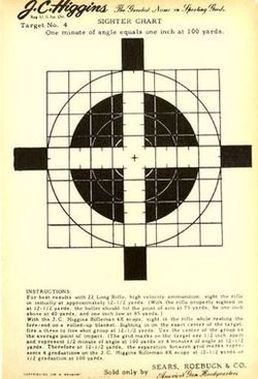
Michael Bates was in the Navy at the time Cheri Jo Bates was murdered, but did he have friends in the military, or aspired to be in the military that may have crossed paths with his sister in the preceding months to her murder. Somebody that may have left the B.F. Goodrich heel print in the Riverside alleyway. "It was subsequently learned that Federal prison industries made low quarter military type shoes and supplied them to all the armed services using black dress shoes."
Michael, by his own admission spent limited time with his sister before he joined the Navy. He did however work at Sears Department Store while attending the Riverside City College. In 1938 Sears would relocate to Seventh and Main Street, Riverside, where the building can be found today. Sears is short for Sears, Roebuck & Company.
Did Michael Bates have a work colleague from Sears, who may have sourced his material from the department store, and somehow became interconnected with the movements of Cheri Jo Bates. The Sears, Roebuck & Company has a distinct connection to the Lake Herman Road murders on December 20th 1968.
In the Department of Justice, Bureau of Criminal Identification and Investigation, conducted by David Burd, the firearm identified as the likely murder weapon at Lake Herman Road was a J C Higgins 80 pistol. The Sears, Roebuck & Company specialized in sporting goods and recreational equipment between 1908 and 1962, with the Sears JC Higgins eventually replaced with the Ted Williams brand. The Sears, Roebuck & Company manufactured their own paper targets throughout the 1930's, 1940's and 1950's, the very targets a young Zodiac may have used. The above target suggested "For best results with .22 Long Rifle."
Whether or not the Cheri Jo Bates murder on October 30th 1966 or the Lake Herman Road murders of December 20th 1968 were the Zodiac Killer's first, the crosshairs loomed large over both.
Michael, by his own admission spent limited time with his sister before he joined the Navy. He did however work at Sears Department Store while attending the Riverside City College. In 1938 Sears would relocate to Seventh and Main Street, Riverside, where the building can be found today. Sears is short for Sears, Roebuck & Company.
Did Michael Bates have a work colleague from Sears, who may have sourced his material from the department store, and somehow became interconnected with the movements of Cheri Jo Bates. The Sears, Roebuck & Company has a distinct connection to the Lake Herman Road murders on December 20th 1968.
In the Department of Justice, Bureau of Criminal Identification and Investigation, conducted by David Burd, the firearm identified as the likely murder weapon at Lake Herman Road was a J C Higgins 80 pistol. The Sears, Roebuck & Company specialized in sporting goods and recreational equipment between 1908 and 1962, with the Sears JC Higgins eventually replaced with the Ted Williams brand. The Sears, Roebuck & Company manufactured their own paper targets throughout the 1930's, 1940's and 1950's, the very targets a young Zodiac may have used. The above target suggested "For best results with .22 Long Rifle."
Whether or not the Cheri Jo Bates murder on October 30th 1966 or the Lake Herman Road murders of December 20th 1968 were the Zodiac Killer's first, the crosshairs loomed large over both.
